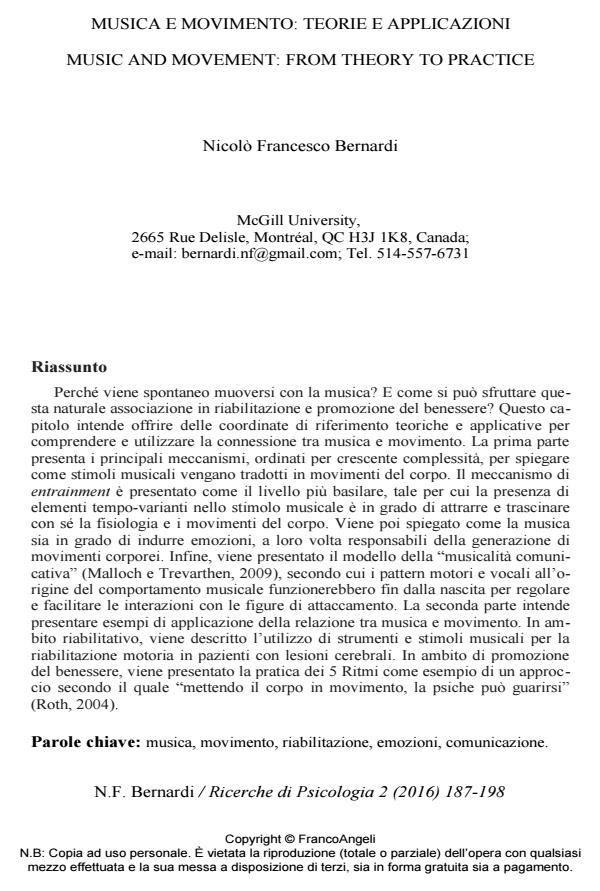Music and movement: from theory to practice
Journal title RICERCHE DI PSICOLOGIA
Author/s Nicolò Francesco Bernardi
Publishing Year 2016 Issue 2016/2
Language Italian Pages 12 P. 187-198 File size 178 KB
DOI 10.3280/RIP2016-002004
DOI is like a bar code for intellectual property: to have more infomation
click here
Below, you can see the article first page
If you want to buy this article in PDF format, you can do it, following the instructions to buy download credits

FrancoAngeli is member of Publishers International Linking Association, Inc (PILA), a not-for-profit association which run the CrossRef service enabling links to and from online scholarly content.
Music and movement. From theory to application. Why do we move our body with the music? And how can we use this natural connection for rehabilitation and for promoting well-being? This essay aims to offer theoretical and practical coordinates to understand and make use of the association between music and movement. The first part describes the main mechanisms responsible for the translation of music stimuli into body movements, ordered by increasing complexity. Entrainment is presented as the most basic phenomenon, by virtue of which the presence of time-varying elements in the music stimuli can attract body movements and physiology. The way in which music evokes emotions is then described, as emotions are themselves involved in the generation of motor patterns. Finally, the "model of communicative musicality" (Malloch & Trevarthen, 2009) is presented. According to this view, the vocal and motor patterns utilized in the early exchanges between newborns and their caregivers would be at the root of adult music behaviors, hence the association between music and movements would be fundamentally interactive in nature. The second part aims to present examples of how the relationship between music and movement can be applied. In rehabilitation, the use of music stimuli and musical instruments is described as a strategy to facilitate motor recovery in patients suffering from acquired brain injuries. In the context of well-being promotion, the 5 Rhythms approach is described as an example of a practice based on the idea that "Put your body in motion and your psyche will heal itself" (Roth, 2004).
Keywords: Music, movement, rehabilitation, emotions, communication
Nicolò Francesco Bernardi, Musica e movimento: teorie e applicazioni in "RICERCHE DI PSICOLOGIA " 2/2016, pp 187-198, DOI: 10.3280/RIP2016-002004